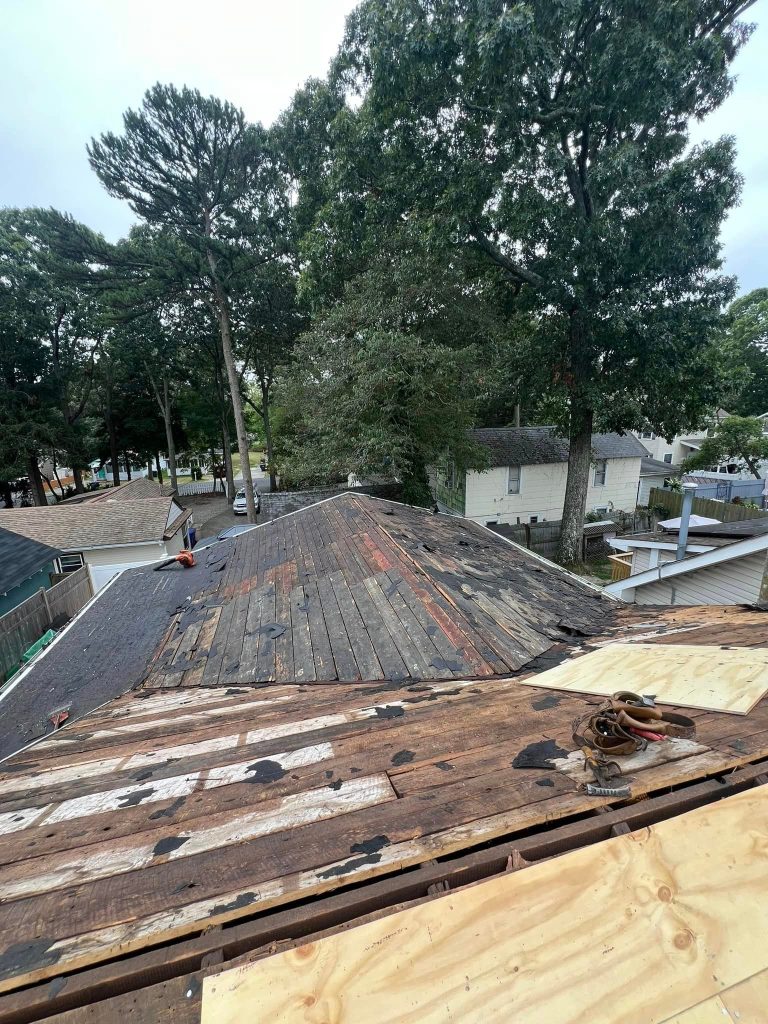Discovering torn roof felt under your tiles can spell disaster – but don’t panic. Our professional guide walks you through the repair process step-by-step, helping prevent costly water damage.
Understanding Roof Felt Damage: Signs and Consequences
Damaged roof felt can lead to serious problems if left unaddressed. The primary function of roof felt is to provide a secondary barrier against water infiltration beneath your tiles. Common signs of torn roof felt include damp patches on ceilings, water stains in the loft, and visible daylight through the roof when inspecting from inside. According to recent 2024 industry surveys, over 60% of roof leaks are attributed to compromised roofing felt. The consequences can be severe, including rotted timber structures, damaged insulation, and potential health risks from mould growth. Early detection is crucial – even small tears can lead to significant water damage, with repair costs averaging £2,500 when left unchecked.
Assessing the Damage: Internal vs External Inspection
A thorough assessment is essential before attempting any repairs. From inside your loft, look for water stains, dampness, or visible tears in the felt. Use a torch during daylight hours to spot any points where light penetrates through. External inspection requires more caution – we recommend using professional safety equipment when accessing your roof. Look for lifted or damaged tiles that might have exposed the felt underneath. Document the size and location of any damage, as this will determine your repair approach. If multiple areas are affected or the damage extends beyond 1 square metre, professional intervention may be necessary.
DIY Repair Methods for Minor Damage
- For small tears (under 30cm): Use flash band or self-adhesive repair tape, ensuring a minimum 100mm overlap on all sides
- Heat gun application: Warm the flash band to 40-50°C for optimal adhesion
- Patch technique: Cut replacement felt 150mm larger than the damaged area, slide under existing felt
- Eaves protection: Install plastic eave trays to redirect water into gutters
- Temporary fixes: Apply roofing sealant for immediate weather protection
Professional Repair Techniques for Major Damage
Large-scale repairs require professional expertise and specific techniques. The process involves carefully removing tiles and battens to access the damaged felt. Modern breathable membranes are now preferred over traditional bitumen felt, offering superior moisture control and a 30-year lifespan. Professional installation ensures proper overlap (minimum 150mm at horizontal joints), correct positioning relative to battens, and appropriate fixing methods. Recent developments in roofing technology have introduced advanced synthetic materials that offer enhanced durability and UV resistance.
Essential Tools and Materials
- Safety equipment: Roof ladder, safety harness, non-slip footwear, protective gloves
- Materials: Roofing felt, flash band, roofing nails, sealant
- Tools: Sharp knife, hammer, heat gun, measuring tape, straight edge
- Optional: Eave trays, ventilation strips, roofing adhesive
Step-by-Step Repair Guide
Begin by ensuring safe access and appropriate weather conditions. Remove affected tiles carefully, marking their positions for reinstatement. Cut out damaged felt, leaving clean edges for the repair. Install new felt section, ensuring proper overlap with existing material – minimum 100mm horizontally and 150mm vertically. Secure with galvanised clout nails at 300mm intervals. Apply weatherproof tape to joints if additional protection is needed. Reinstate battens and tiles precisely, checking for proper alignment and coverage. Always work in dry conditions and allow 24 hours for adhesives to cure fully.
Preventive Measures and Maintenance
Regular maintenance can prevent costly repairs. Inspect your roof internally at least twice yearly, particularly after severe weather. Look for early warning signs like small water stains or felt degradation. Ensure proper ventilation in your loft space – recent studies show that good ventilation can extend felt life by up to 40%. Keep gutters clear and address any loose tiles promptly. Consider applying protective coating to exposed felt edges at five-year intervals.
When to Call a Professional
- Damage exceeds 1 square metre or involves multiple areas
- Structural timbers show signs of rot or damage
- Roof pitch exceeds 45 degrees or access is difficult
- Multiple layers of felt need replacement
- Insurance claim requirements necessitate professional certification
Expert Tips and Common Mistakes to Avoid
From our experience at Bromley Tilers, we’ve observed several critical factors in successful roof felt repairs. Never use silicon sealant as a permanent fix – it deteriorates quickly under UV exposure. Avoid walking directly on tiles or felt during repairs. Ensure all overlaps face downslope to prevent water ingress. Don’t skimp on material quality – premium felt costs only 15% more but lasts twice as long. Always maintain proper ventilation gaps and never cover existing holes without investigating their purpose.
Conclusion: Ensuring Your Roof’s Long-Term Protection
Proper roof felt repair is crucial for protecting your property. While minor repairs can be tackled DIY, significant damage requires professional expertise. Regular inspection and maintenance remain your best defence against costly repairs. For complex repairs or if you’re unsure about any aspect, don’t hesitate to contact qualified professionals. Remember, investing in quality repairs now can save substantial costs in the future.
FAQ
How much does it cost to replace felt under roof tiles?
Full felt roof replacement
Should old roofing felt be removed?
It doesn’t matter who will perform the roof replacement. Make sure that the roofers remove every single piece of the old felt, especially if the shingle is damaged. Most of the time, people just lay the new felt over the old one when the truth is that it is one cheap shortcut that you should never take.
What is the felt called under roof tiles?
Roofing underlay provides an added layer of protection against water damage and moisture in rougher weather conditions where the upper layers can be lifted or broken off in high winds.
How long does roofing felt last under tiles?
Typically, good quality roofing felt under tiles can last anywhere between 20 to 30 years. However, this lifespan isn’t set in stone. It’s subject to the variables discussed earlier, meaning it could be shorter or longer depending on those individual circumstances.
How do you fix the inside of a roof lining?
Fixing the Interior Roof of a Car Spray the underside of the roof upholstery with adhesive. Wait for 5 minutes and then stick the upholstery back to the roof. Alternatively, stick double-sided tape to the drooping upholstery. Or, hold the upholstery in place with pins.
Sources
[1] https://www.youtube.com/watch?v=dXyLq4ANzNk
[2] https://www.youtube.com/watch?v=q-vg10iUzmE
[3] https://www.youtube.com/watch?v=xrV5MWnhoaY



